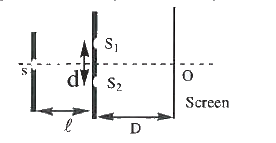Draw a schematic diagram of a part of double stranded dinucleotide DNA chain having all the four nitrogenous bases and showing the correct polarity.
To draw a schematic diagram of a part of a double-stranded dinucleotide DNA chain that includes all four nitrogenous bases and shows the correct polarity, follow these steps:
Step 1: Draw the Backbone
- Start by drawing two parallel lines to represent the sugar-phosphate backbone of the DNA. The backbone consists of alternating deoxyribose sugar and phosphate groups.
Step 2: Indicate the Polarity
- Label one end of the first strand as the 5' end and the other end as the 3' end. Do the same for the second strand, but ensure that the 5' end of one strand aligns with the 3' end of the other strand, indicating that the strands are antiparallel.
Step 3: Add the Nitrogenous Bases
- Choose two purine bases (Adenine and Guanine) and two pyrimidine bases (Cytosine and Thymine).
- On the first strand, attach Adenine (A) to Thymine (T) and Guanine (G) to Cytosine (C) on the second strand.
- Draw lines to represent hydrogen bonds between the bases: two lines between A and T (indicating double hydrogen bonds) and three lines between G and C (indicating triple hydrogen bonds).
Step 4: Label the Bases
- Clearly label each nitrogenous base (A, T, G, C) next to the corresponding structures in your diagram.
Step 5: Finalize the Diagram
- Ensure that the diagram is neat, with clear labels for the sugar-phosphate backbone, nitrogenous bases, hydrogen bonds, and the 5' and 3' ends of each strand.
Diagram Representation
5'−(Phospˆe)−(De⊗yribose)−A−(Hydro≥nBond)−T−(De⊗yribose)−(Phospˆe)−3'∣|∣|3'−(Phospˆe)−(De⊗yribose)−G−(Hydro≥nBond)−C−(De⊗yribose)−(Phospˆe)−5'
- Start by drawing two parallel lines to represent the sugar-phosphate backbone of the DNA. The backbone consists of alternating deoxyribose sugar and phosphate groups.
- Label one end of the first strand as the 5' end and the other end as the 3' end. Do the same for the second strand, but ensure that the 5' end of one strand aligns with the 3' end of the other strand, indicating that the strands are antiparallel.
- Choose two purine bases (Adenine and Guanine) and two pyrimidine bases (Cytosine and Thymine).
- On the first strand, attach Adenine (A) to Thymine (T) and Guanine (G) to Cytosine (C) on the second strand.
- Draw lines to represent hydrogen bonds between the bases: two lines between A and T (indicating double hydrogen bonds) and three lines between G and C (indicating triple hydrogen bonds).
- Clearly label each nitrogenous base (A, T, G, C) next to the corresponding structures in your diagram.
- Ensure that the diagram is neat, with clear labels for the sugar-phosphate backbone, nitrogenous bases, hydrogen bonds, and the 5' and 3' ends of each strand.
5'−(Phospˆe)−(De⊗yribose)−A−(Hydro≥nBond)−T−(De⊗yribose)−(Phospˆe)−3'∣|∣|3'−(Phospˆe)−(De⊗yribose)−G−(Hydro≥nBond)−C−(De⊗yribose)−(Phospˆe)−5'
Similar Questions
Given below is a diagram of a double helical structure of DNA.

Name the four nitrogenous bases that form a DNA molecule.
View SolutionThe figure shows a schematic diagram showing the arrangement of Youngs's Double Slit Experiment

If the distance D is varied, then choose the correct statement (s)
View SolutionThe figure shows a schematic diagram showing the arrangement of Young.s Double Slit Experiment

If the distance d is varied ,then indentify the correct statement
View SolutionThe figure shows a schematic diagram showing the arrangement of Young.s Double Slit Experiment

If the distance D is varied , then choose the correct statement (s)
View Solution_E01_085_Q01.png)
The figure shown a schematic diagram showing the arrangement of young's double slit experiment.
Q. If the distance d is varied, then identify the correct statement-
View SolutionThe figure shows a schematic diagram showing the arrangement of Youngs's Double Slit Experiment

If the distance d is varried, then identify the correct statement
View SolutionThe salient feature of DNA are -
(i) It is made of two polynucleotide chain
(ii) Back bone is constituted by sugar and nitrogen base
(iii) Two chain hacve parallel polarity
(iv) Bases in two strands are paired through H-bonds
(v) The two chain are coiled in a left handed fashion
View SolutionThe figure shows a schematic diagram showing the arrangement of Young.s Double Slit Experiment

Choose the correct statement (s) related to the wavelength of light used
View SolutionGiven is a diagram of a bacteriophage in which one of the options all the four parts, a, b, c, and d are correct.

View SolutionThe figure shows a schematic diagram showing the arrangement of Young.s Double Slit Experiment

Identify the correct statement (s) if the source slit S moved closer to S1S2 i.e the distance l decreases
View Solution